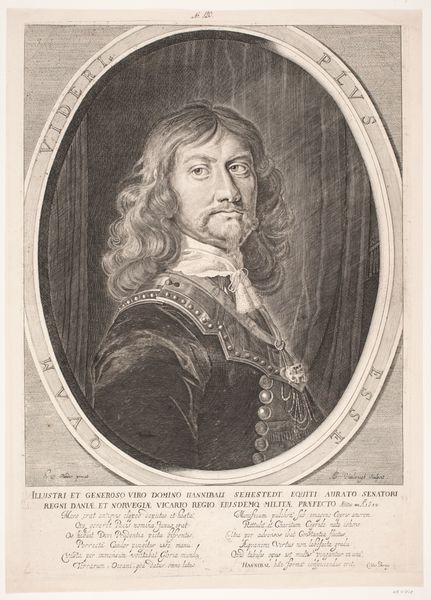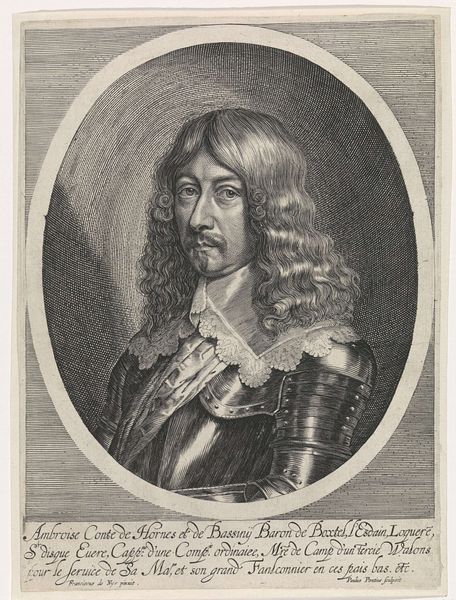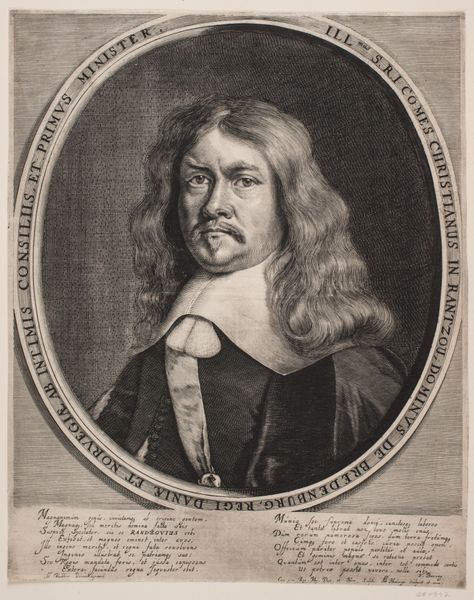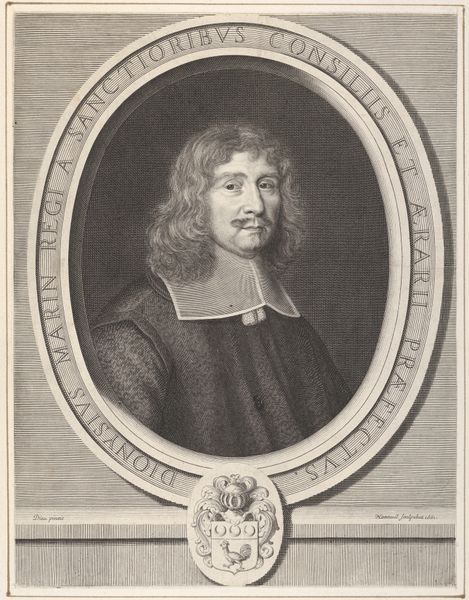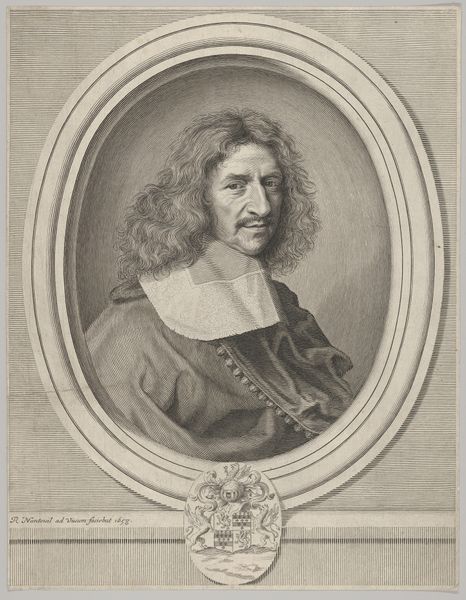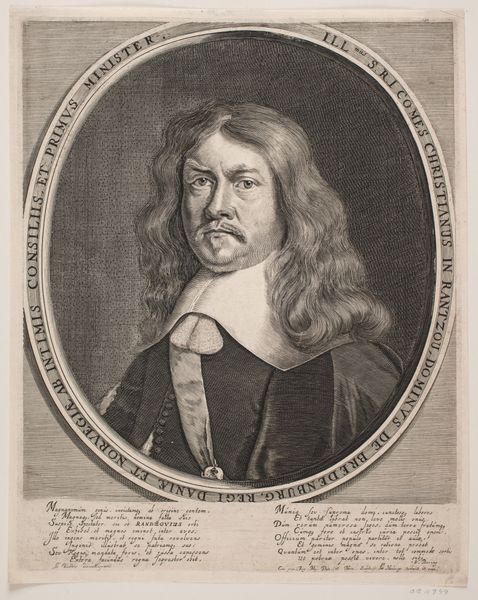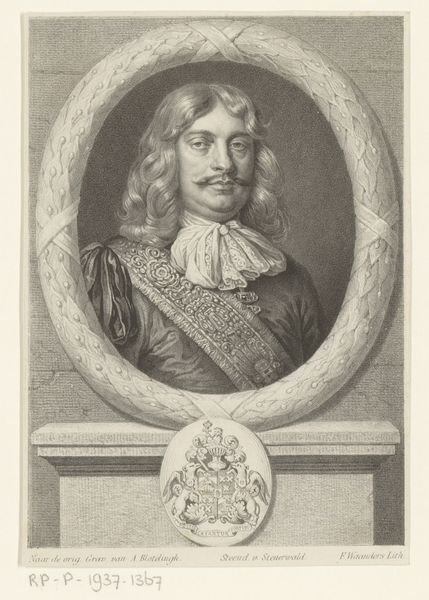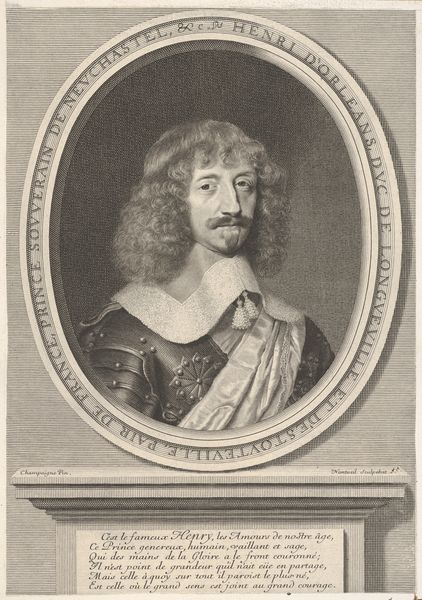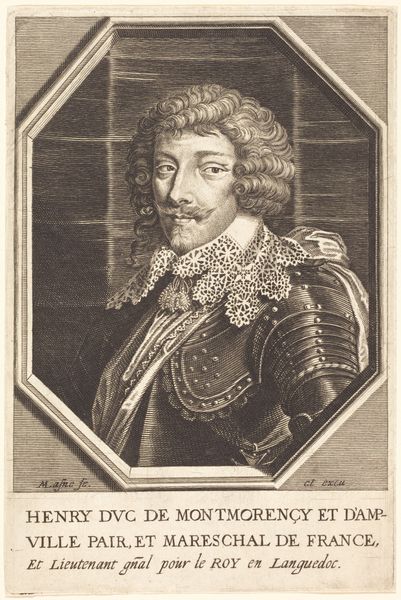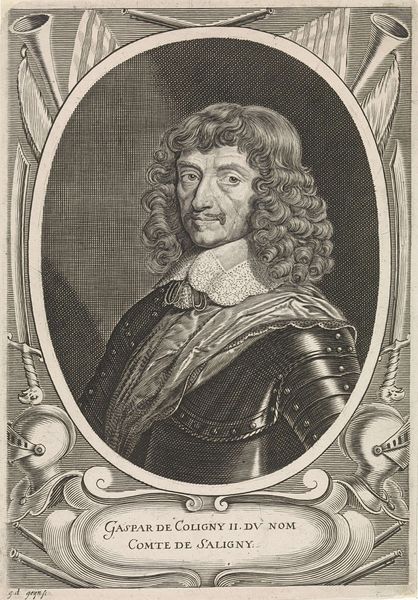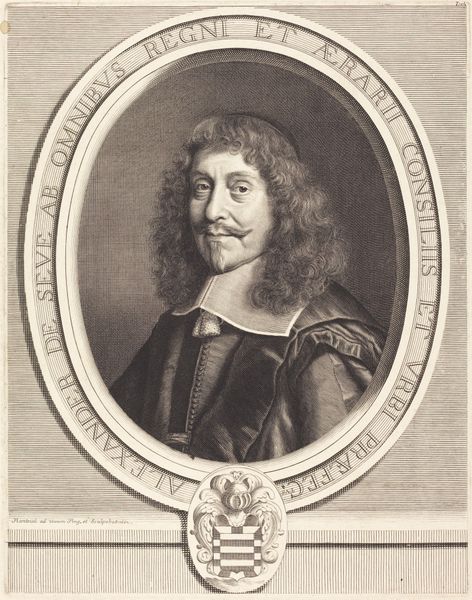
print, engraving
#
portrait
#
baroque
# print
#
line
#
engraving
Dimensions: 579 mm (height) x 394 mm (width) (bladmaal)
Curator: Here, we have an engraving titled "Hannibal Sehested," created around 1650 by Albert Haelwegh. The piece, now residing at the SMK, is a striking example of Baroque portraiture. Editor: My initial reaction? An intensity! The tight framing within that oval really amplifies Sehested's gaze. There’s a theatricality about him that almost leaps off the print. Curator: Absolutely. Haelwegh's skill really shines through in the line work— the precision allows for intricate details in Sehested’s garments and the rich textures. The inscription below serves a symbolic function. It's not just a portrait; it's a carefully constructed representation of power and status. Editor: Speaking of constructed, there is a contrast that feels a bit heavy-handed. Those luxurious, flowing locks against the cold, hard armor! Is it attempting to soften the image or further highlight his status and power? Curator: I believe that the engraving seeks to portray both his authority and refinement. His gaze directs all the viewer's attention towards it. The text around the edge in Latin is quite artful! It does hint at broader contexts; Sehested’s role as a statesman but also his position within a society grappling with significant change. Editor: Change… engraved in a moment of stillness. I think that paradox is precisely why the piece continues to be so compelling today, more than three and a half centuries after its making. What's interesting is the portrait's ability to make me wonder who was he really, what thoughts are behind his penetrating stare? Curator: It certainly sparks our curiosity! As a final word, perhaps the very act of portraying Sehested through this detailed medium grants him a kind of permanence— he becomes a figure immortalized, both through artistry and through historical record. Editor: And perhaps in capturing that historical moment, Haelwegh unconsciously also captured something universally human, and that resonates across centuries.
Comments
No comments
Be the first to comment and join the conversation on the ultimate creative platform.
